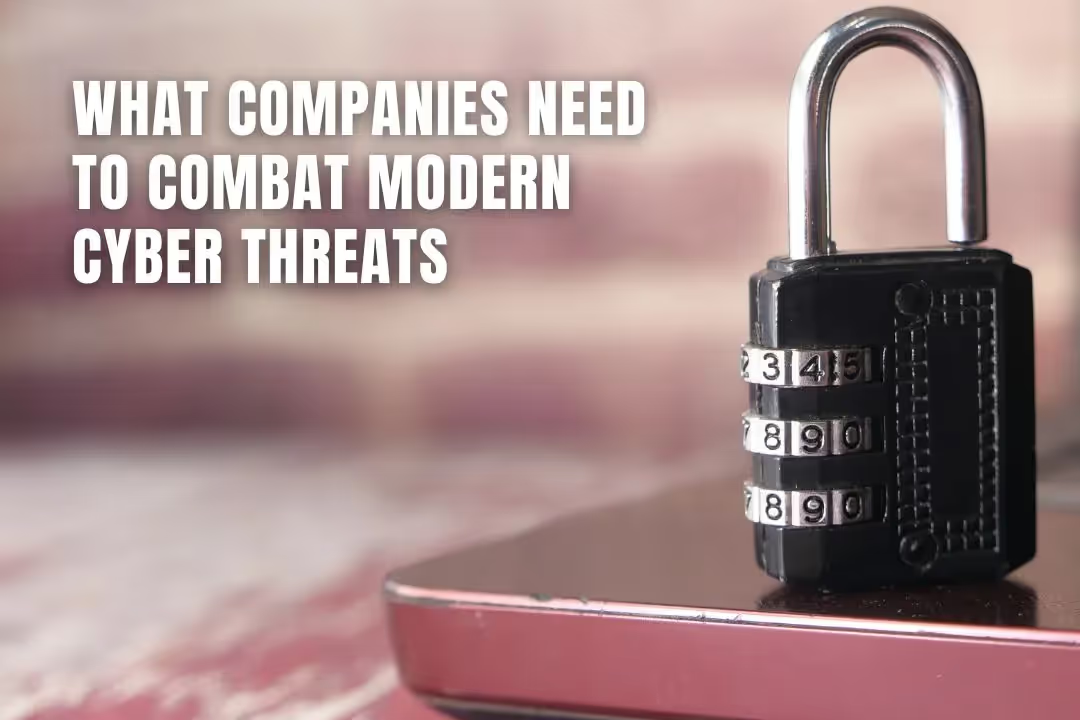
Editorial Disclaimer
This content is published for general information and editorial purposes only. It does not constitute financial, investment, or legal advice, nor should it be relied upon as such. Any mention of companies, platforms, or services does not imply endorsement or recommendation. We are not affiliated with, nor do we accept responsibility for, any third-party entities referenced. Financial markets and company circumstances can change rapidly. Readers should perform their own independent research and seek professional advice before making any financial or investment decisions.
Businesses need to embrace digital transformation to grow and preserve their competitive advantage. Yet the widening footprint of advanced technology increases the risk of cyber threats. As a result, companies must adopt the right strategies to stay safe.
The damages caused by a successful cyber attack can impact a company's bottom line. It can harm its reputation and weaken customer trust. The following types of cyber threats pose the highest risks:
Malware is a broad category of malicious software designed to harm or exploit computer systems. This includes viruses, worms, Trojans, ransomware, and spyware. Malware can infect computers and networks, steal data, disrupt operations, and more.
Phishing involves tricking individuals into revealing sensitive information. Such data include login credentials, credit card numbers, or personal data. Phishing attacks often come in the form of deceptive emails, websites, or messages that appear to be from trusted sources.
DDoS attacks overload a target system or network with traffic, rendering it inaccessible to legitimate users. These attacks can disrupt online services, causing financial losses and reputational damage.
Ransomware is a specific type of malware. It encrypts a victim's data or locks them out of their system. Attackers then demand a ransom for the decryption key or restore access. Ransomware attacks can be financially devastating and may result in data loss.
Advanced conversational chatbots, like ChatGPT, can be used to create more convincing phishing messages. These messages don't contain common red flags, like grammar or spelling errors, making them harder to detect.
IoT vulnerabilities refer to the security weaknesses of IoT devices. Such devices can be cameras or surveillance systems present in a company. Vulnerabilities are shaped as flaws in device firmware, insecure network connections, and inadequate encryption protocols. Cybercriminals can exploit these weaknesses to gain unauthorised access. They compromise data privacy or use compromised devices to enter larger networks.
As of 2023, 92% of malware is distributed via email. It takes 49 days to detect a cyber threat on average. Companies should prioritise cybersecurity to encourage employees to focus on security awareness and mitigate financial loss. The universal rule of thumb for safety is prevention. The following guidelines should help you get started.
Are VPNs worth it? The short answer is yes. Using a VPN, both at home and at work, is essential for protecting online activities. It encrypts your internet connection, protecting sensitive data from prying eyes and cyber threats. When working remotely, a VPN ensures your information remains private and secure. Also, it provides peace of mind in an increasingly interconnected digital world.
Regularly updating software systems is crucial for maintaining cybersecurity and overall system health. Updates often include security patches that fix known vulnerabilities. They reduce the risk of cyberattacks. Updates can improve software performance, add new features, and enhance compatibility with other applications.
Using strong passwords is vital for cybersecurity. They enhance the protection of your digital accounts and sensitive information. Strong passwords are complex and challenging to guess. It makes it difficult for attackers to gain unauthorised access. They act as a crucial barrier against unauthorised entry, reducing the risk of data breaches, identity theft, and cyberattacks.
Opt for secure Wi-Fi connections when going online. Steer clear of public or untrusted Wi-Fi networks, especially when dealing with sensitive tasks. Use a trusted VPN service to shield your online activities from potential eavesdropping for added security.
Implement cybersecurity policies to safeguard your company. Define issue resolution protocols, clarify policy violation consequences, and control physical device access. Prevent unauthorised access to company devices, especially laptops, and cellphones vulnerable to theft.
Enhance your company's security by limiting system access and information visibility to only those who require it for their roles. Avoid granting unnecessary access permissions. Utilise distinct email addresses, logins, servers, and domain names for each user or user group.
Prevention is the key to combating modern cyber threats. As tactics become increasingly sophisticated, businesses must adapt and implement robust cybersecurity strategies. By prioritising cybersecurity, embracing preventative practices, and fostering a culture of vigilance, companies will protect their data and reputation while keeping their competitive edge.
Businesses need to embrace digital transformation to grow and preserve their competitive advantage. Yet the widening footprint of advanced technology increases the risk of cyber threats. As a result, companies must adopt the right strategies to stay safe.